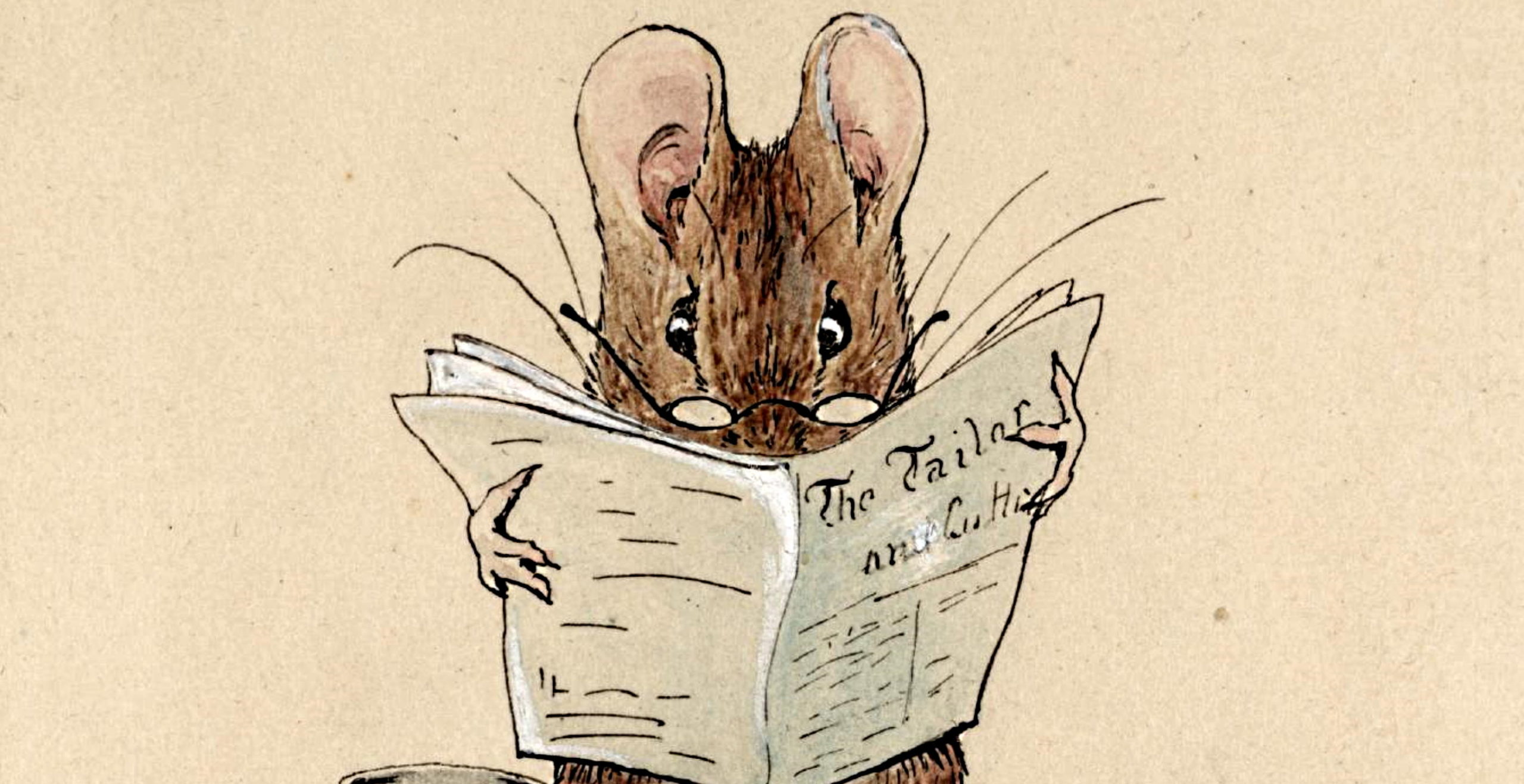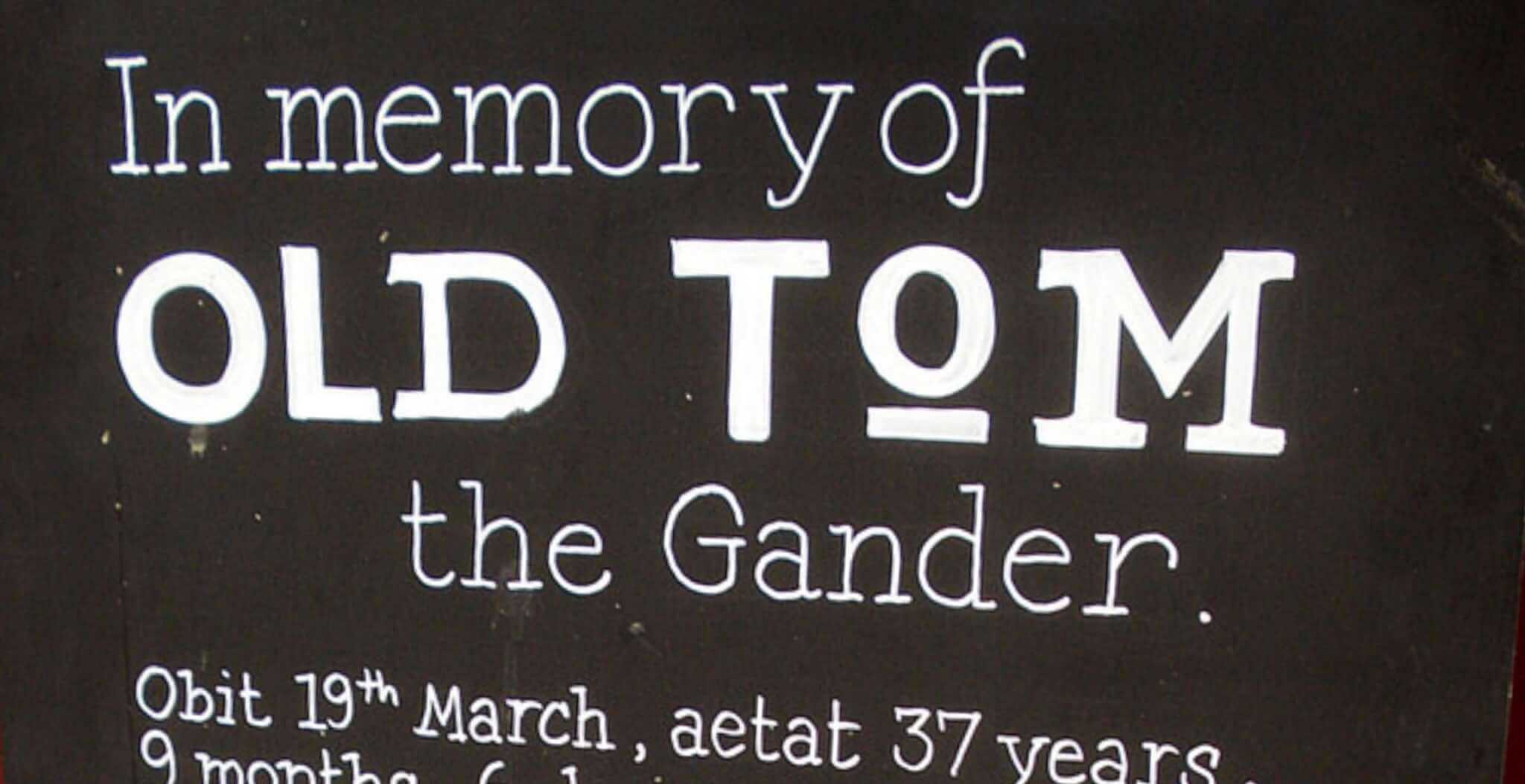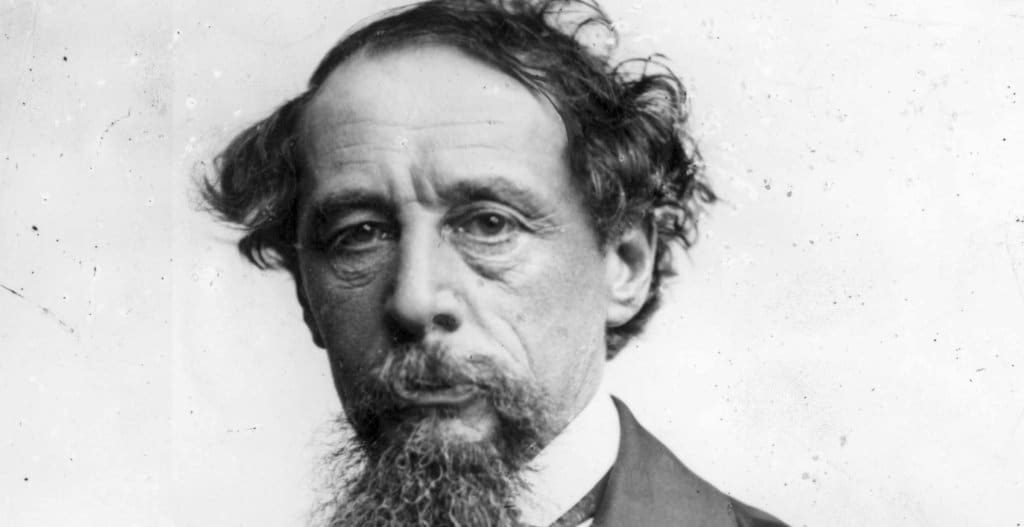One of Britain’s best loved authors, Beatrix Potter is famous for her enchanting tales of naughty animals such as Tom Kitten and Peter Rabbit. A prolific writer and illustrator, she created stories that would entertain and engage generations of children.
Helen Beatrix Potter was born on 28th July 1866 in Bolton Gardens in Kensington, London. Her family lived comfortably as both her parents’ families had made money through the cotton trade in the north of England. Whilst her father was a qualified barrister, he enjoyed photography and shared a passion for art with his wife Helen.
As a family they mixed in an intellectual and artistic social group amongst artists, politicians and writers. Beatrix’s grandfather had been an artist and was the co-founder of the Manchester School of Design. It was clear that a passion for illustration ran through the veins of the family.
Young Beatrix was educated by governesses and lived a typical Victorian childhood. It was not until the arrival of her brother Bertram when she was six years old, that she would have a companion who shared her love of art and nature.
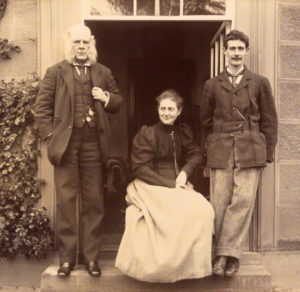 Beatrix Potter, her father and brother c. 1894
Beatrix Potter, her father and brother c. 1894
Beatrix’s father was keen on taking his daughter on day trips to many noteworthy places of culture and education around London. The father-daughter trips to the Natural History Museum as well as the Royal Academy and the South Kensington Museum would help expose young Beatrix to a world of art and design.
The family’s connections to artistic circles in London also proved influential in her initial experimentation with illustration. The Potter’s links to Pre-Raphaelite artists such as Sir John Everett Millais would help to inspire her and encourage her natural artistic flair.
As a child she spent many a day drawing plants and animals, filling sketchbooks with her illustrations, demonstrating her aptitude as well as her vivid imagination. This pastime would become a passion she shared with her brother, who like her, had a keen interest in the animal world. As children they had many pets and animals which they smuggled into their schoolroom, ranging from frogs to hedgehogs and even rabbits.
Whilst Beatrix was actively encouraged by her parents in her artistic and creative pursuits, she also benefited from her education by governesses, particularly Annie Moore, to whom she remained close into adulthood. Beatrix and Annie would become good friends, so much so that Beatrix would send Annie’s eight children letters full of stories and fantastical tales, accompanied of course by vivid illustrations. Seeing the potential, Annie would suggest later to Beatrix that she could turn these stories into published children’s books.
Meanwhile, another source of inspiration for Beatrix’s burgeoning tales came from her annual three month holiday which she spent with her family in the rural idyll of Perthshire in Scotland. This was an exciting time for Beatrix and her brother, who were given the freedom to explore the countryside, further developing her keen interest in botany.
Joining her on these holidays was her first pet rabbit called Benjamin Bouncer, who was said to have enjoyed toast at breakfast and accompanying walks in the countryside. Her next rabbit called Peter Piper would serve as a companion also: it is not hard to see where the inspiration for a naughty young Peter Rabbit came from!
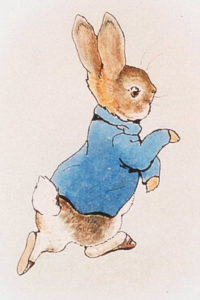 Peter Rabbit
Peter Rabbit
About the time she was sixteen, the family decided to holiday in the Lake District, a location she would fall in love with and remain passionate about until her death. The Potter family stayed at Wray Castle which overlooked the magnificent Lake Windermere, a beautiful landscape which would motivate much of her work in the future.
By 1896, Beatrix’s interest in botany had led to her involvement in the study of fungi for the Royal Botanical Gardens at Kew. As part of this project she developed her own theory on fungi, accompanied by detailed sketches showing cultivation and growth. Beatrix would also benefit from the support of the Scottish naturalist Charles McIntosh, who helped her to embrace a more technical style of drawing that would help to become a well-rounded artist, adept at watercolours as well as scientific sketches.
Furthermore, her parents decided to enrol her at the National Art Training School based in Kensington in order to acquire her certificate as a Second Grade Art Student. In a more formal educational setting, she learnt the skills of life drawing and studied perspective and design, earning her an “Excellent” merit at the end of her course.
Despite proving successful in her art classes, Beatrix did not embrace the formal style of art teaching and rather favoured a self-taught approach, copying from works such as Turner, Constable and Gainsborough or inspired by the nature around her. It was this personal style and animal subject matter that would in the end earn her great fame as a writer and illustrator.
One of her first steps into the formal world of publishing and art was when her designs for greeting cards were accepted by Hildesheimer and Faulkner, and subsequently sparked further interest from a popular annual called Changing Pictures. Her drawings proved well-received and it was at this time that Beatrix sought to publish her own stories and illustrations.
Her most famous creation and one of her earliest stories was of course, the famous tale of Peter Rabbit. The concept originated from a letter sent to Noel, Annie Moore’s son which told a story of a naughty rabbit called Peter who was always getting up to mischief. Whilst her idea was rejected by numerous publishers, Beatrix remained undeterred and in time she managed to publish the story herself.
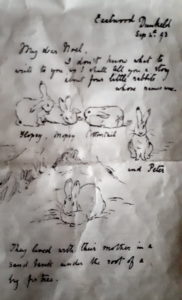 Letter from Beatrix Potter to Noel Moore
Letter from Beatrix Potter to Noel Moore
In December 1901, 250 copies of “The Tale of Peter Rabbit” were given to family and friends, instantly prompting interest from certain parties who had turned down her proposal. Frederick Warne and Co took on “Peter Rabbit” along with her coloured illustrations and in October 1902 published her book. Inevitably, the story proved to be a roaring success and an instant hit, sparking further interest in her next tale published the following year.
For Beatrix, the creation of such legendary stories was not difficult, having been inspired by the nature of the Lake District and her numerous pets. “The Tale of Squirrel Nutkin and “The Tailor of Gloucester” quickly followed, winning over children with her heart-warming and entertaining characters.
Her stories would become a massive success making her one of the most beloved children’s authors not only of her time but throughout the generations. Today, she is still one of the best-selling children’s writers with her tales translated into more than thirty five languages.
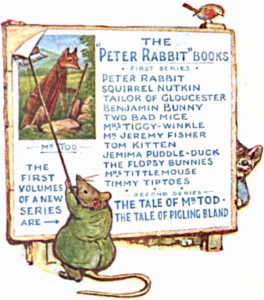
Whilst her commercial success continued to grow, her personal life also blossomed when she became engaged to Norman Warne, her editor in 1905. Whilst Potter’s parents were not happy with the union, tragedy struck when only a month later he died at the age of thirty seven. After suffering such a great and sudden loss, Beatrix decided to buy Hill Top Farm in the Lake District. Her passion for the region and its beautiful countryside remained unwavering and would become a delightful retreat and inspiration for her future literary creations.
Country life suited Beatrix and over the years she became increasingly involved in village life. Over time, she became involved with William Heelis, a local solicitor whom she married in 1913. They lived together at Castle Cottage in the Lake District, a happy and successful partnership where she continued to pursue her literature, her business prospects and her farming life.
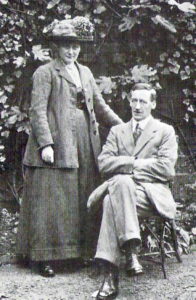 Beatrix Potter and William Heelis on their wedding day
Beatrix Potter and William Heelis on their wedding day
The Lake District was a happy place for Beatrix, reflected in her stories such as “The Tale of Jemima Puddle-Duck”. Her passion for the countryside would lead her to support the National Trust in its mission to preserve rural culture and important buildings.
Beatrix and her husband lived together happily in the country until her death in 1943, leaving behind not only an extensive literary legacy but over four thousand acres of land to the National Trust. Her Hill Top Farm was left for visitors to enjoy for years to come, reflecting her love of nature and in particular the Lake District. Her legacy in both literature, art and nature have endured throughout the years and will continue to inspire generations to come.
Jessica Brain is a freelance writer specialising in history. Based in Kent and a lover of all things historical.
